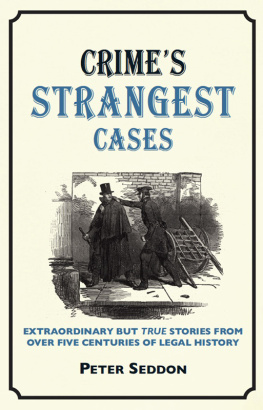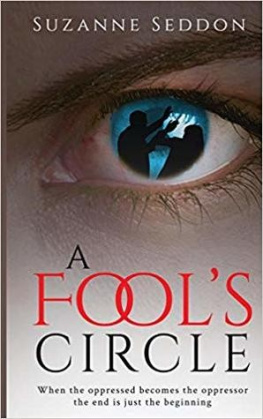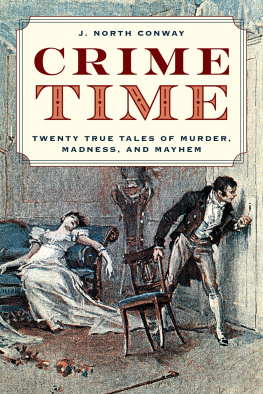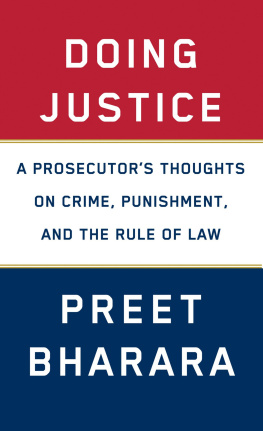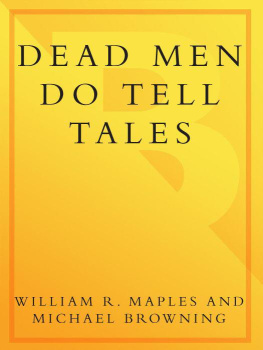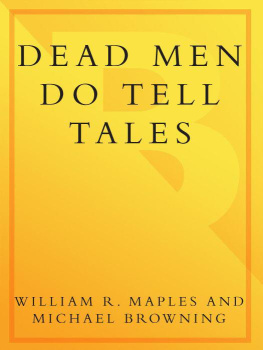CRIMES
STRANGEST
CASES
Other titles in this series
Crickets Strangest Matches
Fishings Strangest Days
Footballs Strangest Matches
Golfs Strangest Matches
Londons Strangest Tales
Motor Racings Strangest Races
Rugbys Strangest Matches
CRIMES
STRANGEST
CASES
EXTRAORDINARY BUT TRUE STORIES FROM OVER FIVE CENTURIES OF LEGAL HISTORY
PETER SEDDON

CONTENTS
SO WHOSE OX IS IT, ANYWAY?
CARLISLE, 1292
I am not guilty and this I am ready to defend with my body. The likelihood of such a staunch defence being offered today, except as pure bravado, is slim indeed. Doubtless individuals still meet occasionally on a darkened night to thrash out some private grievance with the gloves off, but there is no part in the modern legal system for such barbarous ways of delivering justice.
Not so in the Middle Ages, when the so-called trial by battle was all the rage. Indeed, having a rage was quite useful if the suspect threw down the gauntlet to his accusers. Believing passionately in ones innocence was as good a way to get ones dander up as any.
It was the battling Normans who popularised the practice in England after a little skirmish on Senlac Hill, near Hastings, on 14 October 1066. On that occasion, as every school pupil used to know, William, Duke of Normandy, put one over on Harold II, King of England, to become King William I, the Conqueror. Harold lost both an eye and his life during the confrontation on the field now adjacent the East Sussex town of Battle.
The Normans carried this penchant for battling into the legal system by formalising combat into a means of deciding guilt or innocence. Like trial by ordeal, it was seen as a religious rite, and the accused swore on the Bible that he was not guilty of the offence before submitting the decision to the will of God. Men were prepared to risk their lives over what seem in retrospect to be trivial offences, but, as the punishment for being found guilty might be losing a foot or a hand, having an eye gouged out or being put to death by a variety of horrific means, many were prepared to take a chance.
Hugh Bolare was one such. Having just acquired a new ox, he wasnt averse to cruising around with it in a rather ostentatious fashion so that the neighbours got the message. No doubt he gave it a wash-down every Sunday morning. This seems to have got up the nose of one Gilbert the Goose, who accused the boastful Hugh of stealing it from him at the court of Robert le Brus. Leave it out, quoth Hugh or in medieval words to that effect much put out by Gilberts bare-faced cheek: I bought the ox honestly from William the Long.
Perhaps its best not even to conjecture on how said Willie got his name, but suffice to say he created a major impasse by denying the ox had ever been his.
There was nothing for it but trial by battle, so at Carlisle in 1292 the court ordered that Hugh should fight William to establish the truth.
Dispense with noble visions of knights in shining armour, white steeds, lances and battle-axes. That was showcase stuff. Trial by battle generally entailed the combatants in being dressed in ordinary drab civvies, often unarmed, or at best given a wooden club or a sandbag to swing.
The rules were simple. They fought to the death or nightfall, whichever came first. If both men still stood as the stars came out, then the accuser was said to have lost and was labelled a perjurer. The only other option was for either party to give up by crying craven, but, as this amounted to losing the battle and accepting the resulting punishment, it was scarcely a popular choice.
Hugh Bolare didnt crave mercy, but nor did he perish during the fight. He saw the stars over Carlisle that night but so too did William the Long. Both men survived the conflict. Perhaps it was no more than codpieces at ten paces.
But, as it was Hugh who had brought the case by falsely accusing William of selling him the ox, the court was bound to brand Hugh the perjurer and he was duly hanged. So was it Gilbert the Gooses ox? Only the ox knew the truth but he wasnt talking.
There is a curious postscript to this case. Although trial by battle fell largely into disuse by the end of the thirteenth century, the practice was, like many laws, never formally wiped from the statute books.
Thus it was that a judge in Warwickshire shifted uneasily in his chair in 1818 when a defendant found not guilty of murdering a girl was confronted, on the pronouncement of the verdict, by the fair maidens brother noisily accusing him afresh. As a consequence, the defendant entered a legal time warp and cried, I am not guilty and this I am ready to defend with my body!
The judge manfully managed to avert such an anachronistic spectacle and a year later in 1819 Lord Chancellor Eldon moved in the House of Lords that trial by battle be abolished. The bill was agreed to without a word of opposition and indeed witnesses have written that the Lords were dumb struck with astonishment that such a supposedly obsolete matter should be the subject of debate at all.
So now it is much safer to be a two-ox family, although, strangely enough, lawyers about to face each other in court can still sometimes be heard to talk of doing battle.
THE ACCUSED HAVE GONE TO GROUND
STELVIO, ITALY, 1519
Five centuries ago it was a far less secure life being part of the animal kingdom than it is now. No Vets in Practice, Pet Rescue or bearded antipodeans named Rolf to promote the cuddly image of Gods creatures. Just a society that saw animals as equally capable of committing crime as humans and a legal system fully equipped to try them and hang them if the need arose.
It may seem like making mountains out of molehills, and that was certainly the case at Stelvio in northern Italy in 1519, when the authorities decided that damage done to crops in the vicinity of the town was an act of pure wanton destruction.
The identity of the culprits was obvious and a warrant was promptly issued to summon a number of moles, which the court desired should show cause for their conduct by pleading their exigencies and distress.
The moles, while quite evidently vandals of the lowest order, must have had a modicum of intelligence because they cunningly failed to turn up at their trial on the appointed day.
The court passed judgment in their absence and the moles were sentenced to exile, although as an act of mercy they were promised safe conduct on their journey and an additional respite of 14 days to all those who are with young.
But, even as the sentence was read, the pesky burrowers were already shovelling like blazes, making their great escape, ready to pop up in some other poor devils field to create the same havoc all over again. Little varmints!
Nor is this by any means an isolated case. In May 1545 the residents of St Julien in France held a mass trial of vine weevils when their precious wine crop was destroyed. The beetles had their own lawyer, Pierre Falcon, but he failed to bring home their case.
It seems pigs were the real delinquents of the animal kingdom. Records show that 34 were executed for the murder of children, and the porcine culprits were often dressed in human clothing for their court appearances before being publicly hanged or burnt at the stake.
Astonishingly, the notion of animals as criminals survived until the end of the nineteenth century, and the last known such trial was in Switzerland in 1906, when two men and a dog were tried for robbing and killing a man. The men got life but the dog was condemned to death.
Next page
